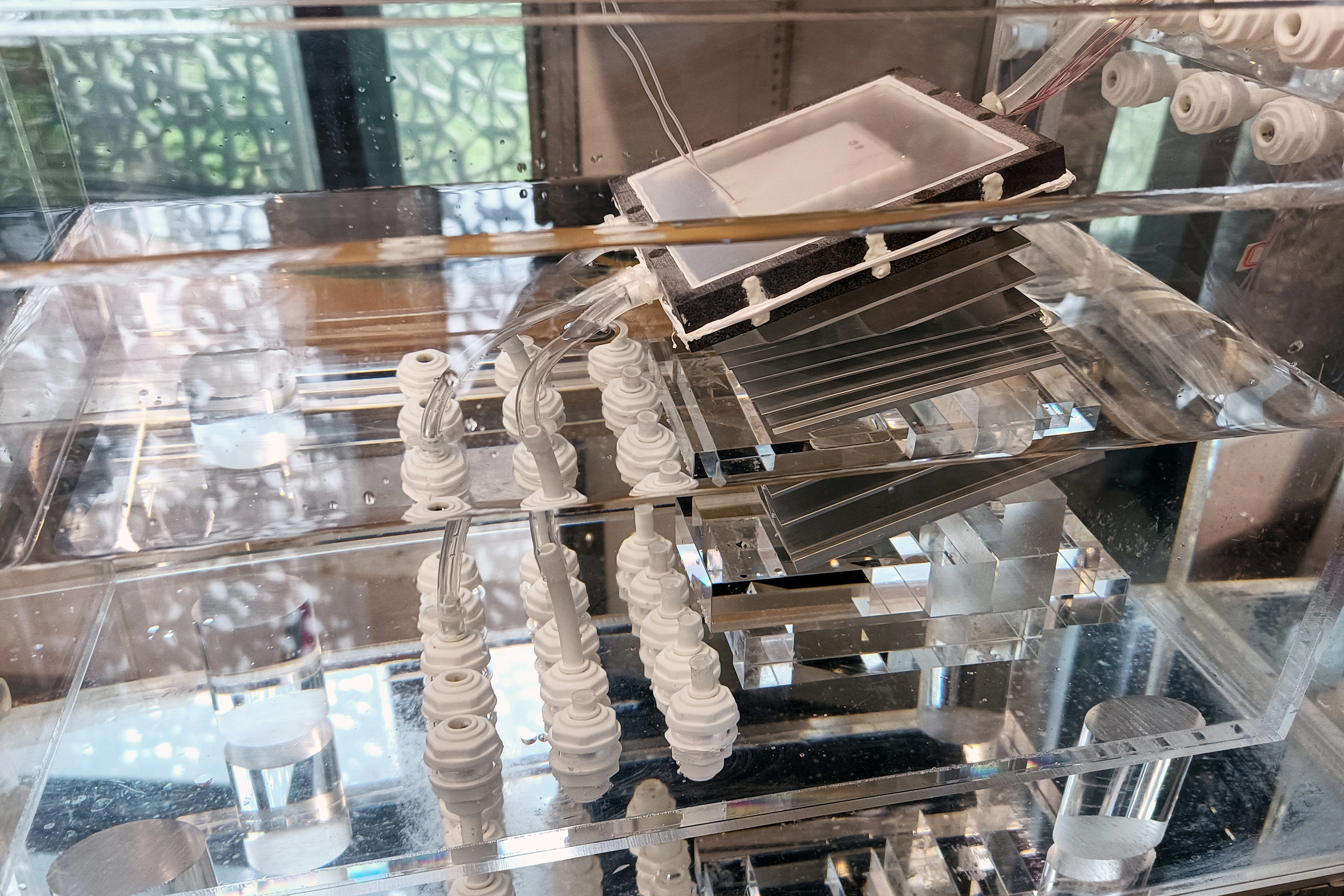Engineers at MIT and in China are aiming to turn seawater into drinking water with a completely passive device that is inspired by the ocean, and powered by the sun.
In a paper appearing today in the journal Joule, the team outlines the design for a new solar desalination system that takes in saltwater and heats it with natural sunlight.
The researchers estimate that if the system is scaled up to the size of a small suitcase, it could produce about 4 to 6 liters of drinking water per hour and last several years before requiring replacement parts. At this scale and performance, the system could produce drinking water at a rate and price that is cheaper than tap water.



Considering how many people live near the coast it would still be a huge step forward. Right now even for most coastal cities desalination isn’t cost effective and they have to import water from inland.
And by not having to deliver as much water from inland to the coast that water can be distributed more for people living inland.
Yes, it’s not going to make inhospitable areas liveable but it’s not just “cool”.
the issue with water networks is they work great when you have the source (usually dams) upstream, water essentially is gravity fed throughout the network with only some localised pumping for certain elevated locations. wastewater again gravity fed towards treatment plants at the lowest point (usually the ocean), so usually, its fairly efficient, despite still requiring enormous amounts of energy.
this doesnt solve that. it has the source where the end point is. the desalinated water needs to be pumped up, to then be gravity fed through the network. In some places, it is worth the cost and energy due to water scarcity, and im not knocking the technology. but claiming its cheaper than tap water is patently false because the distribution cost is far higher
They do this anyway…what do u think a water tower is???
Water towers are designed to provide steady pressure through demand spikes. That’s completely different from transporting the water.
you are completely missing the point mate.
desalinated water STARTS at the lowest possible point in the catchment. Rain water does not.
Bruh where I’m at the water starts underground what are u talking about???
cool, definitely not a typical network
Ground water rarely doesn’t require pumping.
Sounds like this could be feasible for coastal places that are water-thirsty then? (I mean if, for example, L.A. was self-sufficient (or close to it) on water, that would mean quite a lot for its upstream/uphill neighbors). Today L.A. draws from local groundwater, canals from inland, and the Colorado River Aqueduct- and everyone that also depends on those has to make allowances for LA.
if its a relatively flat coastal location, its possible. FWIW I work for a water utility in a coastal city and we have a desal plant. Ive seen the figures. the cost of desalinated water compared to the catchment water is an order of magnitude difference. Sounds like LA it would be ideal for the environmental reasons alone though
A suitcase-sized, passive desalination device also sounds like a must-have for boats of all sizes, if they spend more than a few hours on sea.